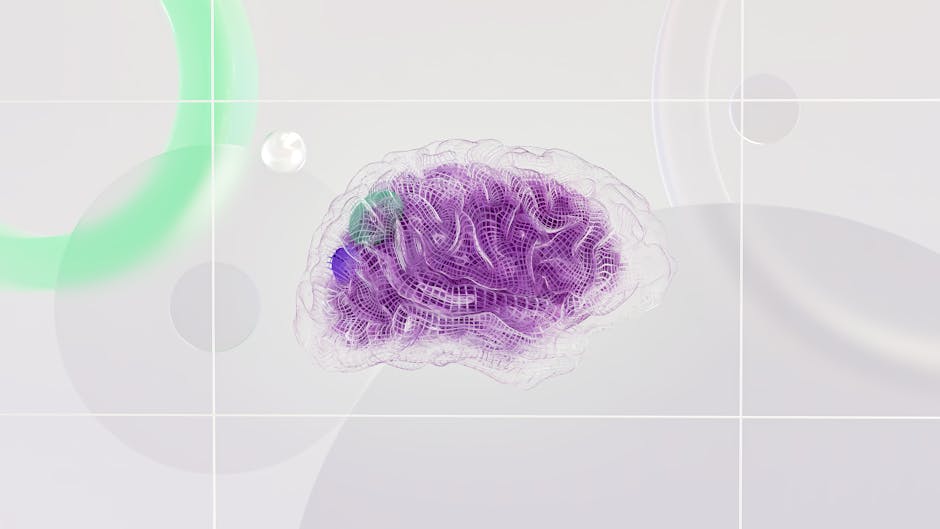Top IoT Development Tools for 2024
You’re about to undertake an IoT project and need the right tools to avoid a digital trainwreck. Let’s get real, security and device management are vital, so you’ll need firmware updates and network segmentation. Cloud-based platforms with scalability and interoperability are a must. Then, there’s AI-powered analytics, edge computing, and gateway solutions to process that mountain of data. Rapid development, collaboration, and visual development tools will speed up your project. And don’t forget real-time data processing, simulation, and testing. You’ve got a lot to cover, but stick with us, and you’ll be well on your way to IoT mastery.
Key Takeaways
• Security-focussed tools like firmware updates and network segmentation are essential for preventing cyber threats in IoT projects.• Cloud-based platforms with scalability, interoperability, and automatic scaling are crucial for successful IoT deployments.• AI-powered analytics tools help make sense of massive IoT data, providing real-time insights and enabling informed decisions.• Edge computing and gateway solutions reduce latency and enhance security by processing data in real-time and filtering out irrelevant data.• Rapid development platforms with visual development tools, simulation, and testing capabilities accelerate IoT project development and reduce time-to-market.
Device Management and Security

As you venture into the world of IoT development, the uninvited guests of cyber threats and device mismanagement lurk in every corner, waiting to crash your party.
You’ve got a vision for a smart, connected world, but you can’t let security and management woes rain on your parade. That’s why device management and security should be top of mind from the get-go.
Think of firmware updates as the secret ingredient in your favourite recipe.
Without them, your devices are left vulnerable to attacks and exploits. Regular updates safeguard your gadgets, keeping them protected and running smoothly.
It’s like keeping your phone’s OS up to date, but on a much larger scale.
Now, imagine your network as a fancy dinner party.
You’ve got all these devices chatting with each other, exchanging data and whatnot.
But, just like you wouldn’t let strangers crash your soiree, you shouldn’t let unauthorised devices join the network.
That’s where network segmentation comes in – it’s like assigning seats at the table, keeping the important stuff separate from the rest.
Cloud-based IoT Development Platforms

You’re spoilt for choice when it comes to cloud-based IoT development platforms, with over a dozen major players vying for your attention.
But choosing the right platform requires consideration of a few key factors.
First and foremost, you’ll want to ponder cloud scalability. Let’s face it, IoT projects can get big, fast. You need a platform that can keep up with your growth, without breaking the bank. Look for platforms that offer flexible pricing models and automatic scaling, so you can focus on building, not worrying about infrastructure.
Next up, you’ll want to weigh IoT interoperability. Your devices, sensors, and gateways all need to talk to each other, and to your cloud. Look for platforms that support a wide range of protocols and standards, from MQTT to CoAP. And don’t even get me started on data formats – you’ll want a platform that can handle JSON, XML, and everything in between.
The last thing you want is to be stuck with a platform that can’t keep up with your device’s latest firmware update. By evaluating cloud scalability and IoT interoperability, you’ll be well on your way to building an IoT project that’s scalable, secure, and actually works.
AI-powered IoT Analytics Tools

You’re about to get your hands dirty with AI-powered IoT analytics tools, and we’re not talking about just any old analytics – we’re talking about the crème de la crème of data analysis platforms and predictive modelling tools that’ll make your IoT project sing.
These tools will help you make sense of the massive amounts of data your IoT devices are spitting out, and even predict what’s gonna happen next.
Buckle up, because we’re about to take your IoT game to the next level!
Data Analysis Platforms
In the wild west of IoT data, AI-powered analytics tools emerge as the trusty sidekicks, helping you tame the chaos and extract insights from the vast amounts of data generated by your IoT devices.
With data mining capabilities, you can dig deep into your data treasure trove, uncovering hidden patterns and correlations that would’ve otherwise gone unnoticed.
But, let’s be real, you don’t have all day to sift through data; you need real-time insights to make informed decisions. That’s where these AI-powered analytics tools come in, providing you with instant visibility into your IoT data.
You’ll be able to identify trends, anomalies, and areas for improvement in real-time, allowing you to optimise your IoT deployments on the fly.
By leveraging these tools, you’ll be able to turn your IoT data into actionable intelligence, rather than just a bunch of 1s and 0s.
Predictive Modelling Tools
With your IoT data finally making sense, it’s time to take it to the next level by predicting what’s around the corner with AI-powered predictive modelling tools that’ll help you anticipate and prepare for the unexpected.
You’ve made it this far, so why not go all in and try to predict the future?
Predictive modelling tools, powered by Machine Learning and Statistical Analysis, are the secret sauce to tapping the full potential of your IoT data.
These tools help you identify patterns, trends, and correlations that might’ve gone unnoticed, giving you a competitive edge in the market.
With predictive modelling, you can forecast equipment failures, optimise resource allocation, and even identify new business opportunities.
It’s like having a crystal ball, minus the mysticism and questionable accuracy.
By leveraging the power of AI, you can make data-driven decisions, reduce risks, and drive growth.
Edge Computing and Gateway Solutions

Your IoT project’s data deluge just met its match: edge computing and gateway solutions, the dynamic duo that’s about to revolutionise the way you process and analyse data. Say goodby to the days of sending every single byte of data to the cloud, only to wait for what feels like an eternity for it to get processed.
Edge computing and gateway solutions are here to reduce latency, enhance security, and make your IoT project more efficient. With edge computing, you can process data in real-time, right at the edge of your network. No more sending sensitive data to the cloud, only to have it compromised in transit.
And with gateway solutions, you can filter out irrelevant data, reducing the noise and increasing the signal.
Fog computing frameworks: These frameworks bring the power of cloud computing to the edge, allowing you to process data in real-time.
Industrial automation protocols: Protocols like OPC-UA and Modbus enable secure, real-time communication between devices on the edge.
Gateway solutions for IoT: Solutions like AWS IoT Greengrass and Azure IoT Edge bring the power of cloud computing to the edge, enabling real-time processing and analysis.
Edge AI platforms: Platforms like Edge AI and Brainium enable you to deploy AI models at the edge, reducing latency and enhancing security.
Low-Code IoT Development Environments

You’re probably thinking, ‘Low-code IoT development environments? Sounds like a bunch of marketing fluff.’
But trust us, these platforms are the real deal, and they’re about to revolutionise the way you build IoT applications.
With rapid development platforms and visual IoT development tools, you’ll be whipping up connected devices in no time – and with minimal coding, at that!
Rapid Development Platforms
Getting your IoT project off the ground quickly means ditching tedious coding and embracing rapid development platforms, which let you build, test, and deploy in record time. You know, the whole ‘move fast and break things’ vibe, minus the breaking things part (because, let’s be real, you don’t have time for that).
With rapid development platforms, you can focus on the fun stuff – like experimenting with new ideas and iterating on existing ones – without getting bogged down in tedious code.
Rapid development platforms let you adopt Agile Methodologies, so you can respond to changes and iterate quickly.
You can do Rapid Prototyping, which means you can test and refine your ideas in no time.
They provide pre-built templates and components, so you can skip the tedious setup and get straight to building.
Many platforms offer real-time collaboration, so your team can work together like a well-oiled machine.
Visual IoT Development
Now that you’ve got your project up and running in record time, it’s time to take it to the next level with visual IoT development tools that let you build and customise your IoT solutions with a lot less coding and a lot more dragging-and-dropping.
Think of it as building with digital Legos – you get to focus on the fun part (creating something amazing) without getting bogged down in tedious code.
Visual IoT development tools are a game-changer for IoT development, making it possible for non-coders to join the party.
With drag-and-drop interfaces and graph-based workflows, you can design and deploy IoT solutions in a fraction of the time it would take with traditional coding.
It’s not about dumbing down the development process; it’s about making it more accessible and efficient.
Real-time Data Processing and Visualisation

As IoT devices spew forth a firehose of data, you’ll need to tame the beast with real-time processing and visualisation tools that can keep up with the torrent. We’re talking millions of data points per second, folks! It’s like trying to drink from a firehose (sensing a theme here?).
You need tools that can handle the deluge and make sense of it all in real-time. That’s where data streaming and graph analytics come in. These superheroes of the IoT world help you process, analyse, and visualise the data as it happens. No more waiting for batch processing or overnight reports – we’re talking instant gratification here!
Apache Kafka is the go-to for data streaming and event-driven architecture. Apache Flink is a real-time data processing and analytics powerhouse. Neo4j is a graph database and analytics for relationships and patterns. InfluxDB is a time-series database for IoT sensor data and more.
With these tools, you’ll be able to process, analyse, and visualise your IoT data in real-time. No more feeling like you’re drowning in a sea of ones and zeros. You’ll be the master of your IoT domain, with data insights at your fingertips. Now, go forth and tame that data beast!
IoT Device Simulators and Emulators

How do you plan to test your IoT device without breaking the bank or losing your mind – or both?
You can’t just magic up a fleet of devices for testing, and even if you could, the cost would be astronomical.
That’s where IoT device simulators and emulators come in – your new best friends.
These tools let you test and refine your IoT device in a virtual environment, saving you from the hassle and expense of physical hardware testing.
With simulators and emulators, you can create virtual prototypes of your device, tweaking and refining until you get it just right.
This virtual prototyping process allows you to identify and iron out kinks before investing in actual hardware.
Hardware testing can be a nightmare, but IoT device simulators and emulators make it a breeze.
You can simulate real-world scenarios, test device performance, and even mimic network connectivity issues – all from the comfort of your own digital sandbox.
This means you can focus on perfecting your device without worrying about the financial and logistical headaches of physical testing.
Conclusion
You’ve made it to the end of this IoT development tool extravaganza!
As you venture into your IoT project, remember: by 2025, there’ll be over 41 billion connected devices worldwide.
Yeah, that’s a lot of devices to manage, secure, and analyse.
Don’t get left behind – choose the right tools to stay ahead of the curve.
Contact us to discuss our services now!


